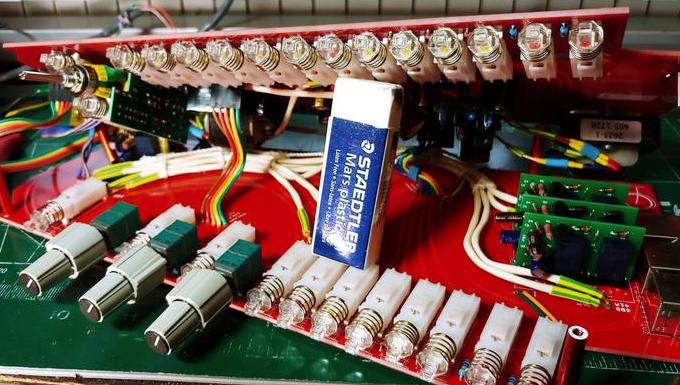Wow thanks Fazer for pulling the channel out and showing me that!
Some cross talk might be unnoticed in the old days. Is that really critical for your needs today?
Good question. I moved on to the aux cards while waiting for the cnc guy to finish my backplane metal. I'm about to jump ship on him as I'm getting tired of missing completion goals...I could use a program manager / life coach at this point. =D
This short answer is...I don't know yet! :

The long answer is Cue (obviously) and experimentation while I build up tube gear. Add some studio outboard dynamics & EQ essentials as income allows, along with a number of dedicated PC servers for realtime fx processing, modular synth stuff, oddball fx gear / spring verb for project-specific album work.
Do you plan on adding an actual Reverb Plate, or Older Digital units?
I have not given outboard verb much thought due to inexperience with the good stuff. Plugins like Altiverb, Valhalla and Lexicon pcm have been my bread and butter for almost all my work to date.
Do you have a cross talk problem that requires that much attention? When connecting all these various shields and outboard and inboard gear, avoiding loops and such is an absolute must.
I have yet to get the beast to sum audio yet...

But yessr, I hear you! Once I build up an aux card in about two weeks the first thing I'll do is test out some returns with pin 1 connected and disconnected to shield, plugging into different outlets around the shop.
Thanks again Fazer and everybody for all the advice! You had me get fairly obsessive with channel card layout that will hopefully pay off. Per suggestions and warnings from Ian and others, I got into the habit of going a little oldschool, replacing all positive audio traces that would otherwise need vias or span any serious length in the cards with shielded p2p wiring. I
believe 12v, 5v and dgnd are about as isolated as possible from signal on a 2 layer board, the only exception being the hpf pcb led. Fortunately noise has not yet been an issue with bench testing un-racked single channels. I've moved a neon lamp and cellphone above and around them with no serious interference... Pray for me this scales up, including summing!




